What is a Ghost Kitchen?
The Covid pandemic changed the way we eat, and ghost kitchens are a big part of that change. In this article, we will explore what is a ghost kitchen, how to open a ghost kitchen, and whether they are still viable in 2025.
loading...
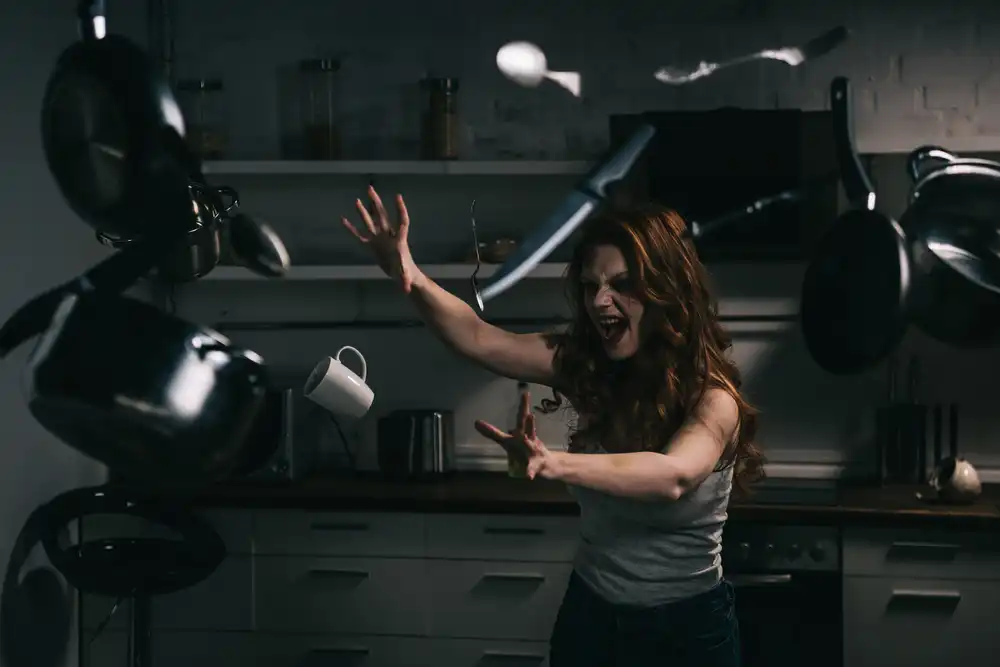
So, ghost kitchens.
Ok, ok... so a ghost kitchen isn't like we what we're showing in the image above, but who says running a blog can't be fun?
What is a ghost kitchen, then? For this article, a ghost kitchen is more like this:
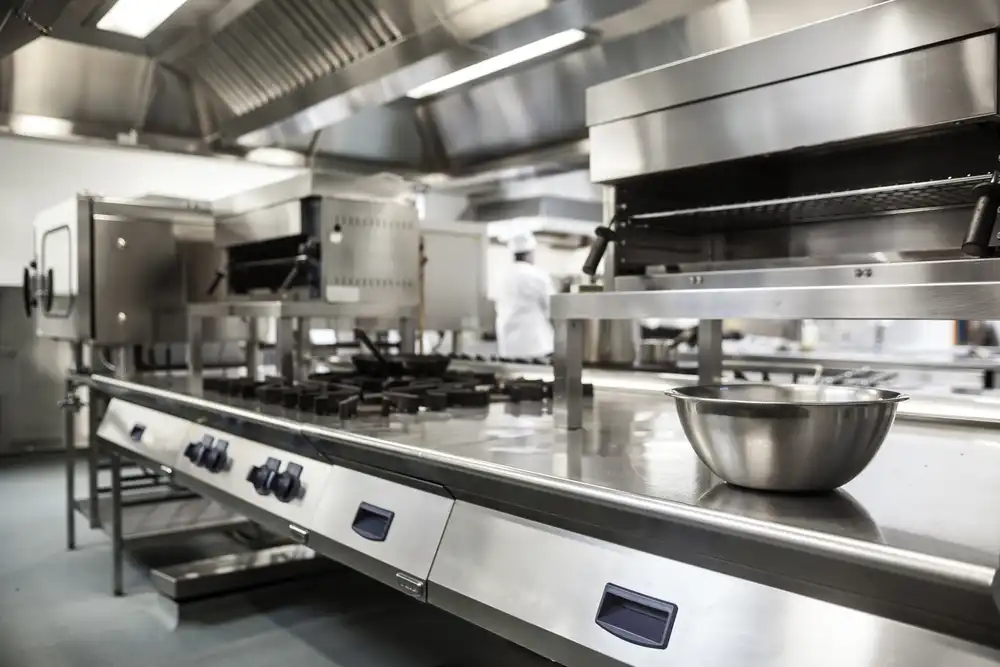
Many people enjoy cooking and possibly a good percentage of them have fancied the idea of selling their dishes to others. But the dreaming stops there due to a lack of financing to open a restaurant or invest in a food truck .
While there are other options such as catering, private chef services food trucks, and pop up restaurants , there is yet another option that allows cooks to sell dishes without being burdened by the costs of a restaurant or food truck.
That option is a ghost kitchen.
The concept is simple: rent (or buy) a commercial kitchen space, cook your food, and sell it through food delivery apps or for pickup.
There is no restaurant, no dining area, and no wait staff.
A ghost kitchen would allow you to just focus on cooking, while food delivery apps like DoorDash and Uber Eats manage everything else.
The market for ghost kitchens in the United States is expected to grow to a size of $2.9 billion in 2025.
This business model brings a lot of benefits for those who work as part-time cooks and single food entrepreneurs.
Before we get into the details of how to start a ghost kitchen, let's further explore what is a ghost kitchen and how it works.
What Is a Ghost Kitchen?
A ghost kitchen is a commercial kitchen where food storage, cooking, and food preparation in to take-out packaging is done.
Unlike a dine-in restaurant, a ghost kitchen exists for the fulfillment of food deliveries — generally when ordered through food delivery apps — and, in some ghost kitchen locations, for pick-up by the consumer.

Regardless of the two options, the key takeaway is that ghost kitchens focus on the food order preparation and do not offer amenities for a consumer to eat their food like a traditional restaurant would.
A ghost kitchen provides the ultimate and most efficient way for independent chefs and small business owners to feed more people in a way that doesn't require a whole building for a dining space and front of the house staff.
If a restaurant doesn't need a dining area, it can be located anywhere. And if the restaurant can be located anywhere, then the restaurant can exist as just a brand on a food delivery app.
That is how these type of restaurants came to be known as a virtual restaurant.
One can say that the ghost kitchen concept is one that unlocks the potential of virtual restaurants.
Since ghost kitchens do not need to provide parking for customers nor an actual restaurant for dining in, ghost kitchens can be established outside of highly trafficked areas where the cost of a lease is expectedly much higher than other parts of a city.
This strategic decision allows for a ghost kitchen to rent in a building where the lease is lower in cost. This immediate cost-saving measure has made them an attractive option for solo entrepreneurs interested in how to open a ghost kitchen while keeping overhead costs to a minimum.
Why Did Ghost Kitchens Come to Be?
Ordering food for delivery is not a new concept, of course.
The new angle that ghost kitchens brought to the table was doing away with the physical restaurant space and having the restaurant exist only as a brand on food delivery apps with the sole purpose of preparing food for delivery or pick-up.
Ghost kitchens gained in popularity in response to the need for restaurants to offer take-out services during the COVID-19 pandemic.
As many of us remember, the pandemic forced restaurants to close their dining rooms and shift to take-out and delivery models. This was an extension of the social distancing measures that were put in place to prevent the spread of the Covid-19 virus.
Many entrepreneurs saw an opportunity there: if a restaurant could operate without a physical dining space, why not create a kitchen that only focuses on take-out and delivery?
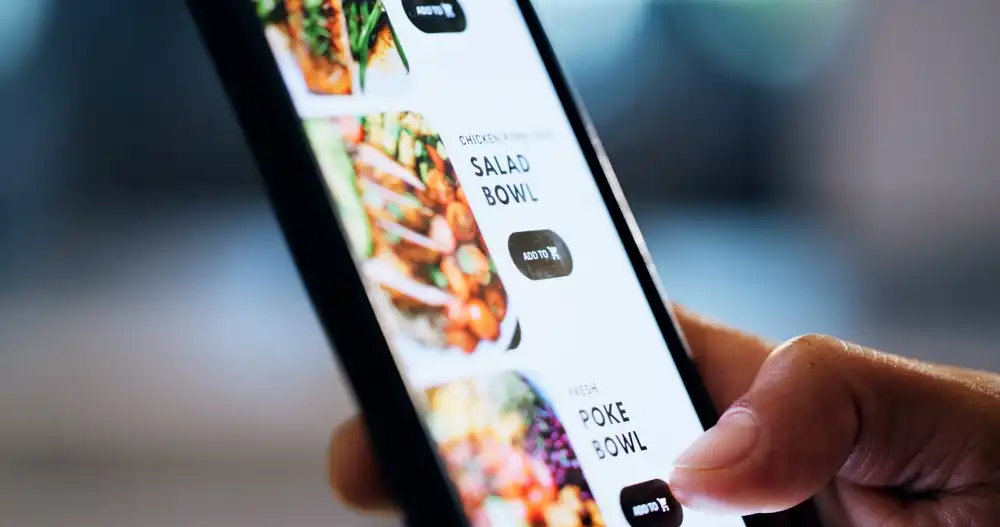
The term ghost kitchen was coined to describe these kitchens that operate without a storefront or dining area. Other terms used to describe them include cloud kitchen, dark kitchen, and virtual kitchen.
For this article, we will use the term ghost kitchen.
The ghost kitchen model gained momentum during the pandemic years, with rising demand for delivered meals making it a hit among many people.
The demand for food delivery services was so strong, in fact, that the ghost kitchen industry was projected to grow astronomically, but alas, that hasn't been the case.
The Peak of Popularity for Ghost Kitchens
The popularity of ghost kitchens peaked between 2020 and 2022, following the COVID-19 pandemic. Industry research indicates that there were an estimated 1,500 ghost kitchens in the United States by the end of 2021.
This reflected a big change in how people got food delivered.
Although the popularity of ghost kitchens increased during the pandemic, their current trend is more about adaptation and consolidation than a total decline. They bless low-cost food makers with agility.
Working solo means focusing solely on the food and letting the apps handle the delivery.
Are Ghost Kitchens Still Viable in 2025?
Although it was once predicted that ghost kitchens would completely transform the restaurant business, it is questionable if this will still be the case in 2025 given the decline of the industry since 2023.
Numerous ghost kitchen projects have closed and funding has decreased as a result of significant obstacles, such as transparency and quality concerns.
Although there have been isolated instances of success, the idea struggles to maintain constant quality and address issues with food safety and traceability.
However, as this article goes live on the Web, there are still ghost kitchens operating in the United States and around the world.
According to some professional estimates, the ghost kitchen industry is expected to grow to $119 billion globally by 2028.
However — and it is a big however — the Internet is littered with articles where these projections were made in 2023 or earlier when the industry was still riding high on the pandemic wave.
The reality is that the ghost kitchen industry has seen a dramatic decline since 2023 with big operators such as Kitchen United having gotten out of the ghost kitchen space.
With the wishful thinking (hype?) of ghost kitchens now being replaced with a more realistic view of the industry, is it still possible for a ghost kitchen to be a profitable business model for part-time cooks and small food entrepreneurs?
Our view at Cocina Digital is that the ghost kitchen model is not dead, but it isn't thriving either.
You can still make money with a ghost kitchen since food delivery is a service that consumers are willing to pay for through food delivery apps, but being successful with a ghost kitchen requires careful planning and execution just like any business venture.

This suggests that while the hype may have cooled, the ghost kitchen model is far from dead — especially for small operators who adapt to changing market conditions.
That said, the concept of a ghost kitchen is still viable in 2025 and for the foreseeable future.
Like anything that requires money to start, we suggest you do your research and plan accordingly. We're not suggesting that you quit your day job and start a ghost kitchen tomorrow.
We're only saying that it is an option on the table. If you plan to start your own food business, give it some thought and see if it is right for you.
This article covers the basics of what is a ghost kitchen and how to open a ghost kitchen, but it is not meant to be a comprehensive guide on how to start a ghost kitchen and operate it.
We suggest you cross reference other sources of information on how to start a ghost kitchen before rushing in.
It's on you to do your research, so do your due diligence and make sure you understand the risks and rewards of how to start a ghost kitchen.
If done right, your ghost kitchen should be like this:
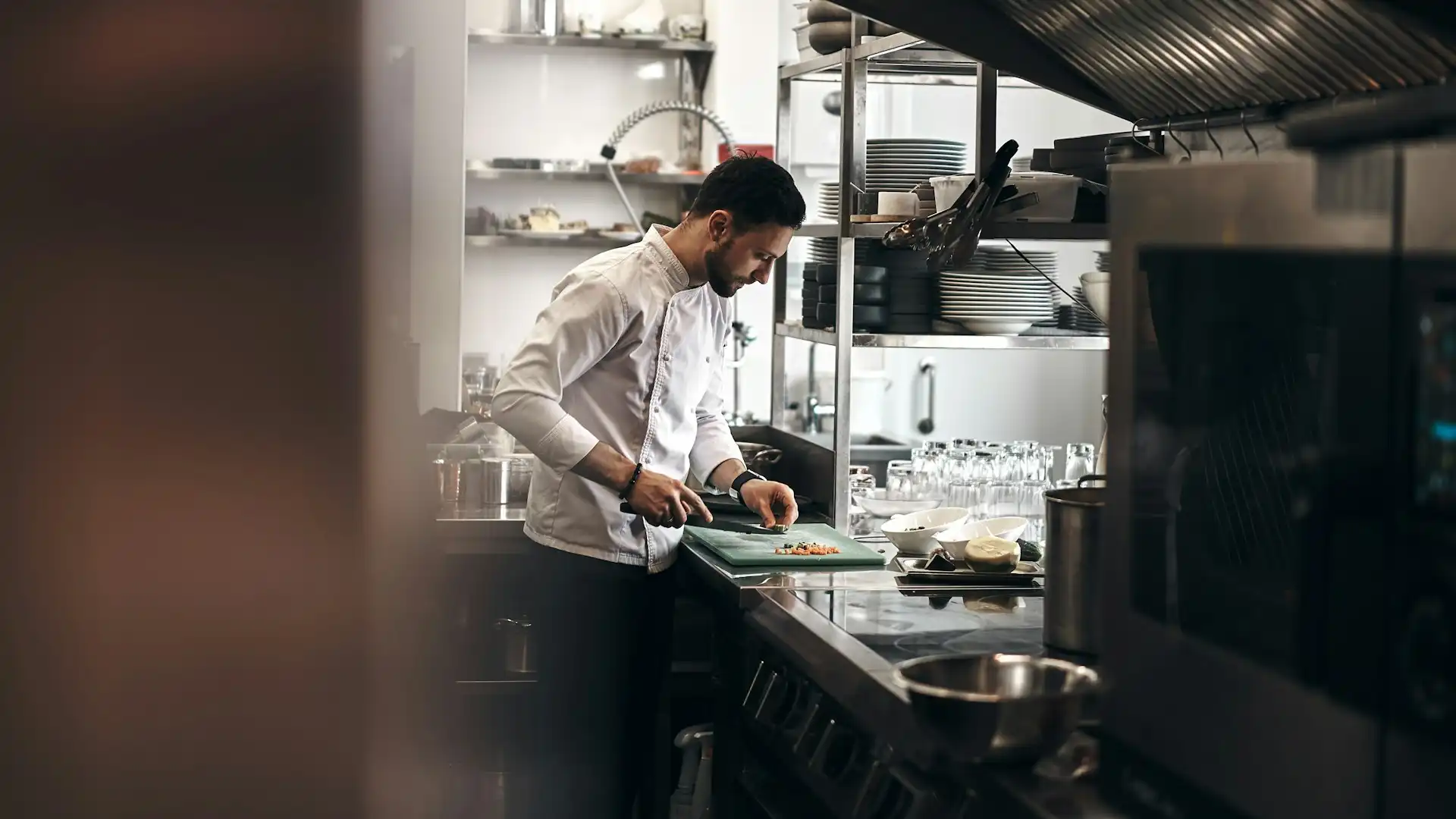
And not like this:

How to Start a Ghost Kitchen
A ghost kitchen can offer significant advantages for part-time home cooks seeking to earn a decent living.
But you simply cooking out of your home kitchen and and saying it is a ghost kitchen doesn't make it so. In fact, it is illegal in most US cities to do so.
This raises the first question: do you need to buy a commercial kitchen to start a ghost kitchen or can you simply rent space at an existing one?
Let's break down what you need to know about how to start a ghost kitchen.
Renting vs. Building a Commercial Kitchen
It's too costly for most people to build a commercial kitchen themselves, although it would be possible. For a fortunate few, a commercial kitchen may already exist to you if you own a restaurant.
A commissary kitchen is a shared commercial kitchen that is licensed and inspected by the local health department.
Key points to consider when deciding whether to rent or build a commercial kitchen:
A commissary kitchen is best for a low-cost entry.
✅ Costs are paid on an hourly or monthly basis to use it.
✅ Rental agreements, of course, are on a case-by-case basis, but if the ghost kitchen does offer an hourly or monthly rental arrangement, a start-up or part-time cook has an easier way to exit if his or her food business isn't profitable.
✅ This allows the part-time cook to experiment with dishes to see if they catch on, while not obligating the cook to a long term lease.Building your own kitchen is best for full control.
✅ Building your own kitchen is, of course, an excellent option if you want full control over the floor plan and equipment installations, but it requires a major investment.
✅ However, if you are doing this full-time and see high usage of the kitchen, this option would make more sense economically over the long run.
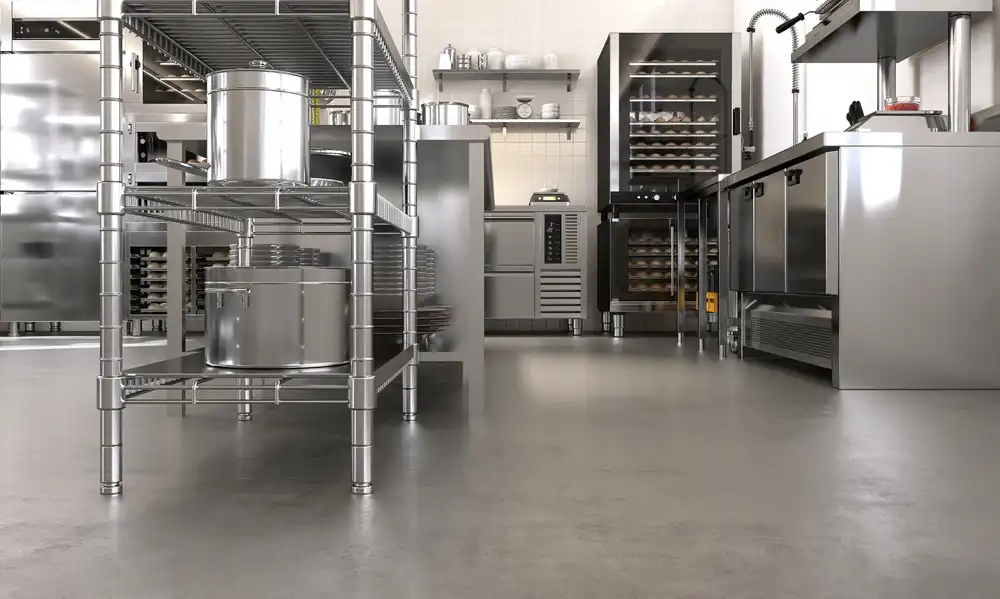
Since we can't assume that all readers of this article already own a restaurant or have the money to build a commercial kitchen, we'll limit the scope between renting or buying a commercial kitchen for the remainder of this article to just exploring the option of renting a commercial kitchen.
This article will still provide you useful guidance on starting and operating a ghost kitchen regardless of whether you choose to rent or build a commercial kitchen.
Let's continue our exploration of how to start a ghost kitchen by looking at how to even find available commercial kitchens.
Searching for Existing Commissary Kitchens
Find websites that connect food companies with shared kitchens:
1️⃣ The Kitchen Door
2️⃣ Peerspace
3️⃣ City-specific Facebook groups or food business communities
Another great way to find a commercial kitchen to rent is to simply do a search in Google for the terms “ghost kitchen rental near me” or “commissary kitchen near me.”
You may also try searching for commercial kitchens available for rent in your area or consult your local health department, which typically maintains a record of licensed kitchens.
You may also try searching for commercial kitchens available for rent in your area or consult your local health department, which typically maintains a record of licensed kitchens.
Finding a commercial kitchen is an important step on how to start a ghost kitchen, but it is not the only step. Let's now look at what you need in terms of team size, expected work hours, and equipment to be successful with a ghost kitchen.
What Does One Need to Be Successful with a Ghost Kitchen?
Running a ghost kitchen requires diligent work, effective organization, and a solid understanding of logistics. Control what you can control and those things that you can control should include the following:
🚀 Size of Team
👌 For simple menus, a solo cook can start alone.
👌 2-3 people may be needed for a larger menu, busy times, and delivery support.
🚀 Expected Work Hours
⏳ Prep: 2-4 hours before service
⏳ Service: 3-6 hours
⏳ Cleanup/Admin: 1-2 hours
Allow 6-10 hours per shift.
🚀 Equipment You May Need
Commissary kitchens generally provide ovens, fryers, and other equipment, but do your due diligence and confirm that to be case.
The commercial kitchen may have cupboards or cabinets where you can store dry and cool food items for long periods, such as beans and peas.
In some cases, the commercial kitchen may also provide tools for rent.
Regardless of whether it is provided to you as part of the lease or something you have to buy, it's best to have the following equipment to run a ghost kitchen:
👨🍳 Specialty tools like blenders
👨🍳 Packaging supplies
👨🍳 Digital Food Thermometer
👨🍳 POS-integrated tablet for managing delivery orders from food delivery apps like Uber Eats or DoorDash
Permits and Licenses Needed for a Ghost Kitchen
Even without a storefront, you're still running a food business, and that means regulations apply. Here's what you'll typically need in the U.S.:
1. Business License
It establishes your kitchen as a legal entity (such as an LLC or corporation) to maintain a business bank account and pay taxes.
2. Food Handler's Permit
Every shift should have at least one certified individual in food safety, such as those trained in ServSafe in many states.

3. Health Department Permit
If renting a licensed kitchen, inspections may be done. Ask if sub-permits are needed.
4. Sales Tax Permit
Reporting sales taxes is a requirement from your state’s Department of Revenue.
5. Delivery App Agreements
Register to deliver with services such as DoorDash, Uber Eats, and Grubhub.
Bonus: Liability Insurance
Some kitchens opt for insurance to protect against accidents or food safety issues.
Next, let’s explore the best types of food to prepare in ghost kitchens so that people crave them even after delivery rides with a maximum duration of 30 minutes.
Dishes That Do Well and Dishes That Do Not Do Well
Ghost restaurant owners must make a decision early in the planning process about what food to serve.
Since your entire company depends on food delivery, the dishes have to taste great and be able to survive the food delivery trip.
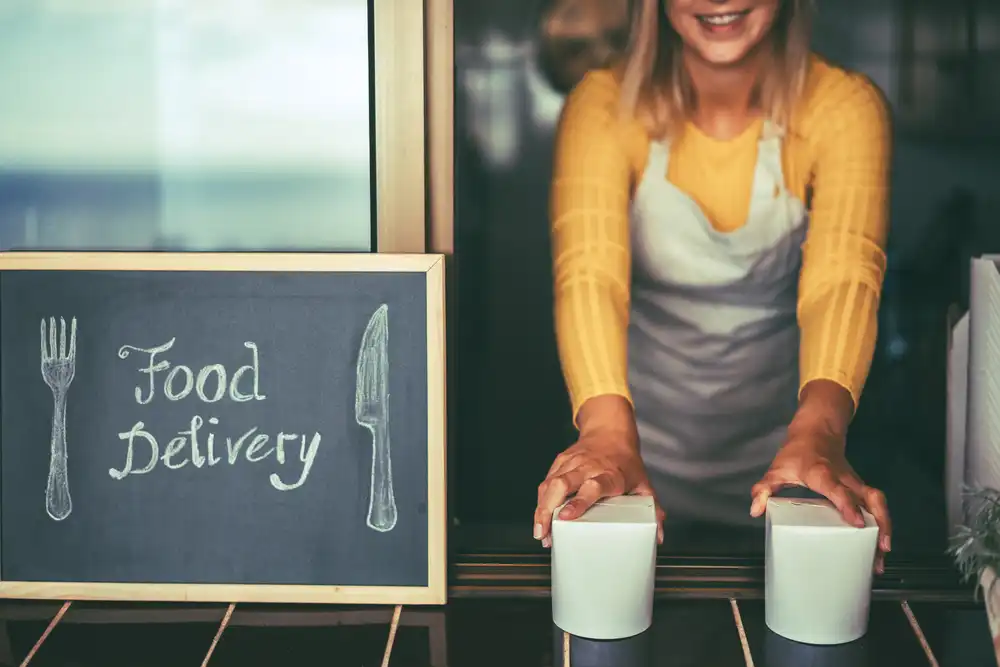
In the United States, the typical delivery time is between 30 and 45 minutes.
The food must arrive in Instagram-ready condition, with its quality, appearance, and temperature still intact.
Some dishes are better for this than others, though.
Despite your best efforts, warm food being kept in a take-out container for 30-45 minutes will not look like what is shown to the customer on a food delivery app. Moisture build-up in the container is generally the culprit.
Some dishes will arrive soggy, wilted, or just look plain unappealing, which can lead to poor ratings even though they were cooked correctly.
Below is a list comparing food types that tend to perform well for food delivery from a ghost kitchen and those that do not.
Dishes That Do Well
| Dishes that Do Well | Why They Work |
|---|---|
| Pizza | Retains heat, sturdy crust holds up well |
| Pasta (esp. baked pasta) | Holds heat, sauces soak in without separating |
| Burritos & wraps | Self-contained, minimal mess, retains structure |
| Rice bowls/stir-fry | Absorbs sauces well, with minimal mess |
| Noodle dishes (lo mein, pad Thai) | Flexible textures, still flavorful when reheated |
| Curries & stews | Heat retention and flavor improve with time |
| BBQ meats (pulled pork, brisket) | Moisture-rich, forgiving to transport |
| Soups (in proper containers) | Excellent heat retention |
Dishes That Do Not Do Well
| Dishes That Do Not Do Well | Why They Struggle |
|---|---|
| Fried foods (like fries) | Lose crispiness, become soggy in steam |
| Salads with dressing | Greens wilt, presentation suffers |
| Steak (medium rare) | Overcooks in transit, quality declines |
| Ice cream / frozen desserts | Melts before arrival unless specially packed |
| Delicate seafood (like scallops) | Texture changes quickly, doesn’t hold heat well |
| Poached eggs or runny yolks | Break easily, become rubbery, or messy |
| Fried eggs, omelets | Dry out or separate during delivery |
| Crispy sandwiches (like BLTs) | Bread gets soggy from steam |
Analysis of a Dish That Does Well: Burritos
Burritos are among the most delivery-friendly menu items at ghost kitchens. From Chipotle to independent taco spots, burritos have taken the lead.
Reasons for their success:
🌯 Wraps are easy to handle. Foil or paper keeps burritos hot and well-protected.
🌯 No mess inside. All ingredients stay neatly wrapped.
🌯 A wide range of options. Vegan to meaty. Spicy or mild. Simple to prepare.
🌯 Easy to reheat. Whether in a microwave oven, burritos keep their flavor and texture.
In conclusion, burritos are a good fit for ghost kitchens. They are simple dishes that work well for delivery. Perfect for new operators!
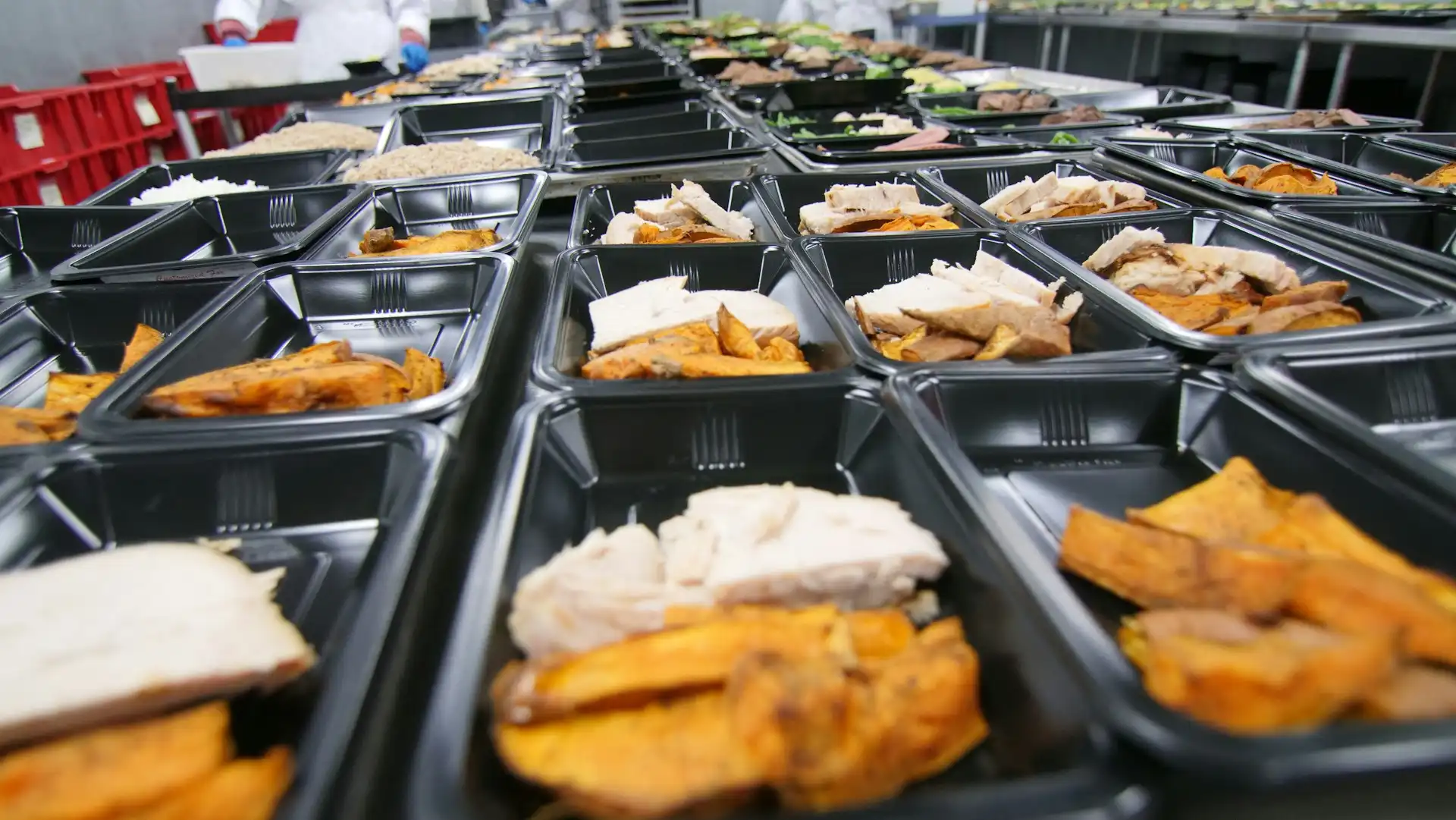
Be Sensible About Your Ghost Kitchen
As a part-time or sole chef, here are some tips to remain competitive:
✅ Specialize: Not every food is good for delivery.
✅ Be efficient: Since you’ll probably tackle this alone, focus on simple prep and packing.
✅ Food delivery apps serve as storefronts: learn how to promote yourself online, respond to feedback promptly, and adjust your approach based on reviews.
✅ Licenses and food safety regulations must also be followed: Just like traditional restaurants, ghost kitchens must adhere to local health regulations.
In summary, if you’re strategic, creative, and love cooking, a ghost kitchen can still be an effective way to earn money from your culinary abilities.
Conclusion
Ghost kitchens allow you to cook and sell food without a traditional restaurant.
It's a great way to do what you love. Plan a menu and utilize apps to reach your customers.
You can have a small kitchen and use delivery services like DoorDash. This way, you can start a food business at a speed and scale that works for you.
With ghost kitchens, you can try new ideas with low risk. You can make a wide range of food, from BBQ to pasta.
Now, anyone can turn their passion for cooking into a source of income. If you want to be your own boss in the food industry, give serious consideration to the ghost kitchen business model.
One more thought before we finish... if you arrive at your ghost kitchen and you see this:

Run the other way! This is not a ghost kitchen, but a horror kitchen. You are not ready for this yet. We warned you.
Re-read this article on What is a Ghost Kitchen? if you're still confused.
©2025 Cocina Digital Hospitality Group, Inc. All rights reserved.
No part of this publication may be reproduced, stored in a retrieval system, or transmitted in any form or by any means, electronic, mechanical, photocopying, recording, or otherwise, without the prior written permission of the publisher.
We use cookies to enable you to use our site, understand how you use our site, and improve your overall experience.
Cookies allow us to personalize content, track which pages are most popular and least popular, and provide advertising that may be relevant to you.
Please note that cookies that are essential to the proper functioning of the site are required and cannot be disabled.
They are usually only set in response to actions made by you which amount to remembering your settings, a request for services, such as setting your privacy preferences, logging in, or filling in forms.
As such, they are the only cookies that are enabled by default.
You can set your browser to block or alert you about these cookies.
By continuing to use our site, you accept our use of cookies.